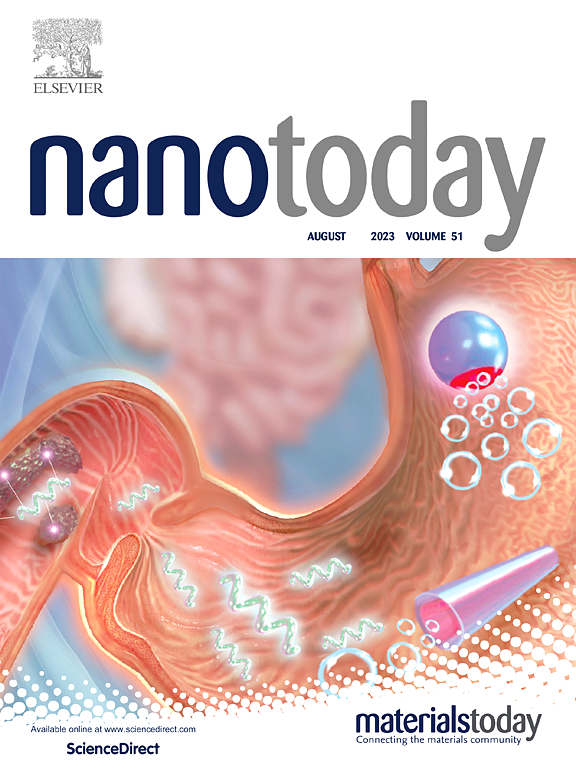Distinct immunological features of Ferritin and AP205 nanovaccines lead to differing therapeutic outcomes against chronic hepatitis B
IF 10.9
1区 材料科学
Q1 CHEMISTRY, MULTIDISCIPLINARY
引用次数: 0
Abstract
Ferritin and AP205 are two well-established representative nanoparticle platforms widely used in vaccine development. However, their immunological properties, vaccine efficacy, and underlying mechanisms remain incompletely characterized. In this study, we systematically compared the immune profiles of Ferritin- and AP205-based nanovaccines, explored their mechanisms of action, and evaluated their efficiency in the AAV-HBV infection mouse model. Our results demonstrated that the AP205 vaccine, which incorporates intrinsic ssRNA as a built-in adjuvant, elicited a stronger antibody response with a balanced IgG1/IgG2c profile. In contrast, the Ferritin vaccine supplemented with extrinsic CpG adjuvant induced an IgG1-biased antibody response. At the T cell level, the AP205 vaccine promoted a more mature germinal center T follicular helper (GC-Tfh) cell response, whereas the Ferritin+CpG vaccine stimulated a stronger Th1 response, likely due to enhanced dendritic cell activation by CpG. We further showed that codelivery of antigen and adjuvant is necessary and sufficient to augment IgG2c response for both platforms. Functionally, although the AP205-preS1 vaccine exhibited superior preventive efficacy against acute AAV-HBV infection compared to the Ferritin-preS1 +CpG vaccine, it showed reduced therapeutic efficacy against chronic AAV-HBV infection, highlighting the importance of Th1 immunity in viral clearance. Together, these findings suggest that the AP205 platform may serve as an effective platform for prophylactic vaccines, while Ferritin+CpG may hold greater potential for therapeutic applications requiring strong Th1 responses, such as chronic hepatitis B (CHB).
铁蛋白和AP205纳米疫苗不同的免疫学特性导致对慢性乙型肝炎不同的治疗结果
铁蛋白和AP205是两种具有代表性的纳米颗粒平台,广泛应用于疫苗开发。然而,它们的免疫学特性、疫苗效力和潜在机制仍不完全清楚。在本研究中,我们系统地比较了基于铁蛋白和ap205的纳米疫苗的免疫特性,探讨了它们的作用机制,并评估了它们在AAV-HBV感染小鼠模型中的有效性。我们的研究结果表明,包含内在ssRNA作为内置佐剂的AP205疫苗引发了更强的抗体反应,具有平衡的IgG1/IgG2c谱。相比之下,铁蛋白疫苗补充外源性CpG佐剂诱导igg1偏向抗体反应。在T细胞水平上,AP205疫苗促进了更成熟的生发中心T滤泡辅助细胞(GC-Tfh)反应,而铁蛋白+CpG疫苗刺激了更强的Th1反应,可能是由于CpG增强了树突状细胞的激活。我们进一步表明,抗原和佐剂的共递送对于增强两种平台的IgG2c应答是必要和充分的。功能上,虽然AP205-preS1疫苗对急性AAV-HBV感染的预防效果优于铁蛋白- pres1 +CpG疫苗,但对慢性AAV-HBV感染的治疗效果却有所降低,这凸显了Th1免疫在病毒清除中的重要性。总之,这些发现表明AP205平台可能作为预防性疫苗的有效平台,而铁蛋白+CpG可能在需要强Th1反应的治疗应用中具有更大的潜力,例如慢性乙型肝炎(CHB)。
本文章由计算机程序翻译,如有差异,请以英文原文为准。
求助全文
约1分钟内获得全文
求助全文
来源期刊

Nano Today
工程技术-材料科学:综合
CiteScore
21.50
自引率
3.40%
发文量
305
审稿时长
40 days
期刊介绍:
Nano Today is a journal dedicated to publishing influential and innovative work in the field of nanoscience and technology. It covers a wide range of subject areas including biomaterials, materials chemistry, materials science, chemistry, bioengineering, biochemistry, genetics and molecular biology, engineering, and nanotechnology. The journal considers articles that inform readers about the latest research, breakthroughs, and topical issues in these fields. It provides comprehensive coverage through a mixture of peer-reviewed articles, research news, and information on key developments. Nano Today is abstracted and indexed in Science Citation Index, Ei Compendex, Embase, Scopus, and INSPEC.
 求助内容:
求助内容: 应助结果提醒方式:
应助结果提醒方式:


